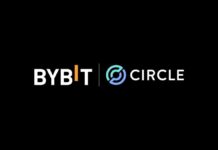
Major economies around the globe signaled in the last year that they will tolerate cryptocurrency, with this tentative thumbs up spurring a flurry of emerging blockchain infrastructure companies in these countries. New wallets, platforms and exchanges are not far from launch, and will help people access the blockchain ecosystem in much greater numbers. Exchanges serve a primary purpose in that they empower individuals to buy cryptocurrencies with fiat money and thereby become participants in decentralized networks whether trading or investing in ICOs without much complication.
It’s possible to visualize the cryptocurrency economy and the fiat economy as two sides of an hourglass. The fiat side is much larger, of course, and exchanges are where the two are connected—providing an effective highway for fiat money to flow into cryptocurrency. Favorable regulation may presage more exchanges, widening this channel even further with the passage of time. Many believe that the cryptocurrency market cap, which has grown to over $500 billion recently, is still in its infant stages, an overwhelmingly healthy attribute for the still nascent blockchain technology. New participants, motivated by the chance to obtain a piece of the market’s momentum, will help prove the entire model’s efficacy by becoming users in the biggest blockchain platforms of tomorrow.
New Platforms and New Participants
Even without being tied to fiat money, the proliferation of new tokens on bitcoin-exclusive exchanges helps them gain popularity and users. The grandfather of cryptocurrency, bitcoin, maintains the connection however. Senator Mark Warner, during a Senate hearing last month, remarked “I don’t think you can separate cryptocurrencies from blockchain”. This sentiment was echoed by CFTC Chairman J. Christopher Giancarlo, who repeated the motto “… If there was no bitcoin, there would be no blockchain.” Regulators around the world are waking up to the incredible potential of this new technological architecture, and accordingly, the tokenized startup model is quickly becoming a smart way to introduce competitive new business solutions.
When a blockchain startup matures, the money it raised during the ICO helps it achieve milestones and notoriety, fueling good press and deals to list their token on exchanges. As the tokens spread out over the greater exchange network, increased exposure helps the price of coin rise, filling company coffers. This keep the company’s trajectory on the up and up, while investors benefit as well, like a more accessible version of the existing equity model. Just as the New York Stock Exchange lets retail investors buy equity in companies like Apple and Netflix, cryptocurrency exchanges deliver access to a new market of blockchain tech innovators without the need for a broker.
Genius Emerges From the New Model
The mutually beneficial relationship between ICOs and exchanges has helped some of the best ideas on blockchain exceed their token sale goals, all while bringing high quality blockchain services to market. Innovative ideas (and their tokens) such as Basic Attention Token (BAT), Coinlancer (CL), and Golem (GNT) gain an opportunity to prove their benefits over existing models, all while showing the uninitiated that cryptocurrency can be a responsible actor in this budding paradigm shift.
Basic Attention Token, for example, gives internet advertisers a better way to track how users engage with their ads using a metric focused on ‘attention’ rather than clicks or likes. Few marketers truly understand how effective their ads are, and this is a problem that the Brave browser and BAT intends to solve for companies and the audiences they target. Users can choose to filter the advertisements they see (or don’t see) and get paid in BAT for allowing the browser to measure how much of their attention was given to the ad. Publishers also receive ad revenues in BAT, creating a closed ecosystem that serves all participants better than the status quo.
Other novel applications of the best of blockchain include Coinlancer, which deploys smart contracts built on the Ethereum blockchain to create a more transparent, equitable job marketplace. Existing sites like Fiverr or Upwork.com often take an unfair cut (sometimes upwards of 20%) on what is likely a freelancer’s full-time salary, all while making it difficult to settle disputes if one isn’t properly paid for delivering work. With the decentralized ledger tracking everything, it’s simple to prove that a freelancer fulfilled the terms of his or her contract, and if so, money put in escrow from the beginning is released. Coinlancer allows users to pay, and get paid, in CL tokens, removing both overhead and exorbitant fees at the same time. With CL tokens listed on the world’s exchanges, freelancers from around the planet gain greater reach while keeping more of the profits from newfound clients.
Meanwhile, in another clever use of blockchain, Golem uses its GNT token to reward network participants who allow the blockchain to commandeer their processing power, merging it to offer others (who pay in GNT) remote supercomputer capabilities. This take on parallel processing reduces hardware costs and time invested for those who need to render complicated 3D graphics, or compile enormous databases, but lack the means to do so. Though Golem doesn’t exactly have competitors, it’s one of the most purposeful examples of blockchain around.
What the Future Holds
As governments and central banks continue to untangle the cryptocurrency puzzle, the industry pushes ever forward. Regardless of how inextricable blockchain is with the coins and tokens it creates, the model that encompasses both looks to be the foundation of choice for tomorrow’s tech marvels. Exchanges will likely continue to be the portal by which new audiences discover them, and with just a few years’ more momentum, blockchain companies will be serving and converting more mainstream audiences at an advanced velocity.
[newsletter_form lists="1"]










